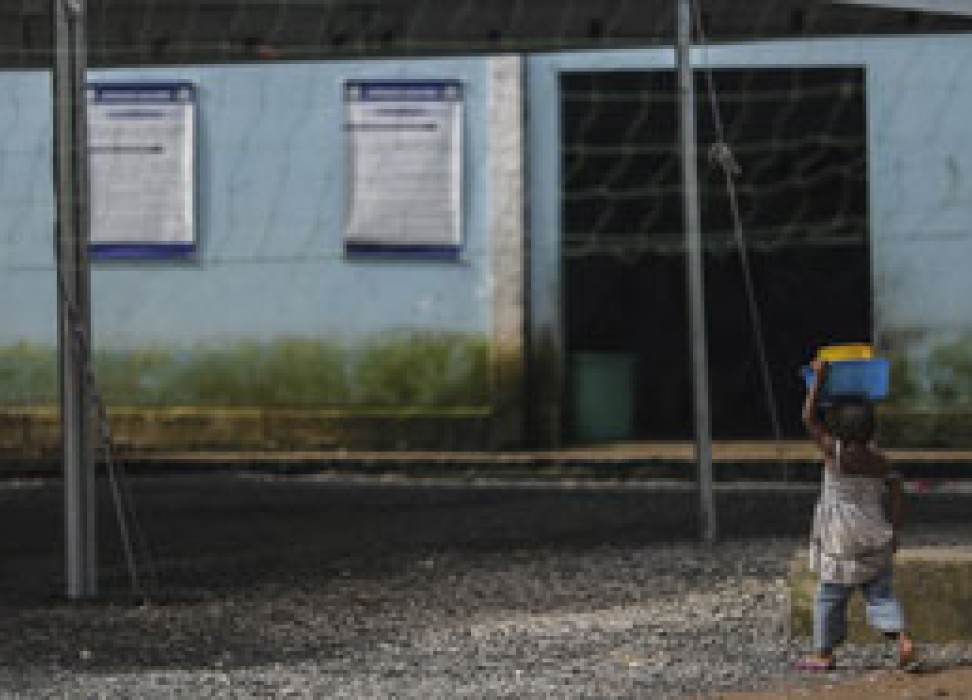SDGs: Leaving no one behind? Some are being pushed back
18 July 2018

A UN high-level meeting to assess progress in the implementation of the Sustainable Development Goals (SDGs) opened in New York July 9 with a recognition that progress has been made, but not fast enough to achieve the goals by 2030.
UN Deputy Secretary-General Amina Mohammed highlighted progress in some areas, including maternal and child mortality; tackling childhood marriage; expanding access to electricity; and addressing global unemployment.
She stressed, however, that in other areas, “we are either moving too slowly, or losing momentum”. She observed that for the first time in a decade, the overall number of people who are undernourished has increased – from 777 million in 2015, to 815 million in 2016 – “fundamentally undermining our commitment to leaving no one behind”.
Assistant-Secretary-General for Human Rights, Andrew Gilmour, reminded the High Level Political Forum (HLPF) on Sustainable Development that “leaving no one behind is an affirmation of the principles that are central to human rights: equality and non-discrimination.”
Echoing the Deputy Secretary-General, Gilmour noted “important progress in some countries, regions and localities” towards meeting the pledge to leave no one behind. He stressed, however, that in overall terms, “we are not on track for 2030.”
Not only are some people being left behind but, even worse, some are being pushed even further behind, he observed, quoting from a recent report of the UN Committee for Development Policy.
“Some are being pushed behind by the forces of globalization, technological advance, climate change, environmental degradation, austerity policies, and many forms of discrimination – as the risks and burdens are tragically, systematically and inequitably borne by our poorest and most marginalized communities,” he said. “And some are being pushed even further behind, not so much by those impersonal forces of globalization, but rather by very up close and personal and deliberate policies. For example, when they are dispossessed of their lands, property, water and other resources.” He gave examples of indigenous and land defenders from Honduras and other Latin American countries, houses and villages being destroyed in the Occupied Palestinian Territory, and institutionalized discrimination against the Rohingya in Myanmar.
He rejected the idea that these forces are “inevitable”; their negative impacts “the collateral damage of achieving greater economic growth or security.”
“We can change the policies, we can challenge the rules of the economic game, we can protect human rights, and we can ensure that the risks and benefits are shared more equally. Indeed, the SDGs require that we do so,” he said.
Gilmour also warned that “trickle-down” economics has proved a spectacular oxymoron, noting that “torrent-up” economics far better describes the unequitable distribution of wealth we are faced with. He cited the statistic from Oxfam that the top one per cent captured 82 per cent of all of the growth in global wealth in 2017, whereas the poorest 50 per cent of the global population - 3.7 billion people - saw their share of total global wealth increase by less than one percent.
Beyond economic inequality, we also need to recognize the fact that “persistent forms of discrimination, including gender discrimination, leave individuals, families and whole communities marginalised, excluded and left behind,” he said.
To realise the central promise of the 2030 Agenda, Gilmour emphasized that “what’s needed is a broader collective challenge to the real obstacles lying in the path of the SDGs, and this requires tackling discrimination and inequalities in all their forms.”
The SDGs are part of the 2030 Agenda for Sustainable Development, a global plan of action agreed at the UN by all governments, which seeks to “realize human rights for all”, end poverty and hunger, combat discrimination and inequalities, build peaceful, just and inclusive societies and protect our planet.
18 July 2018

